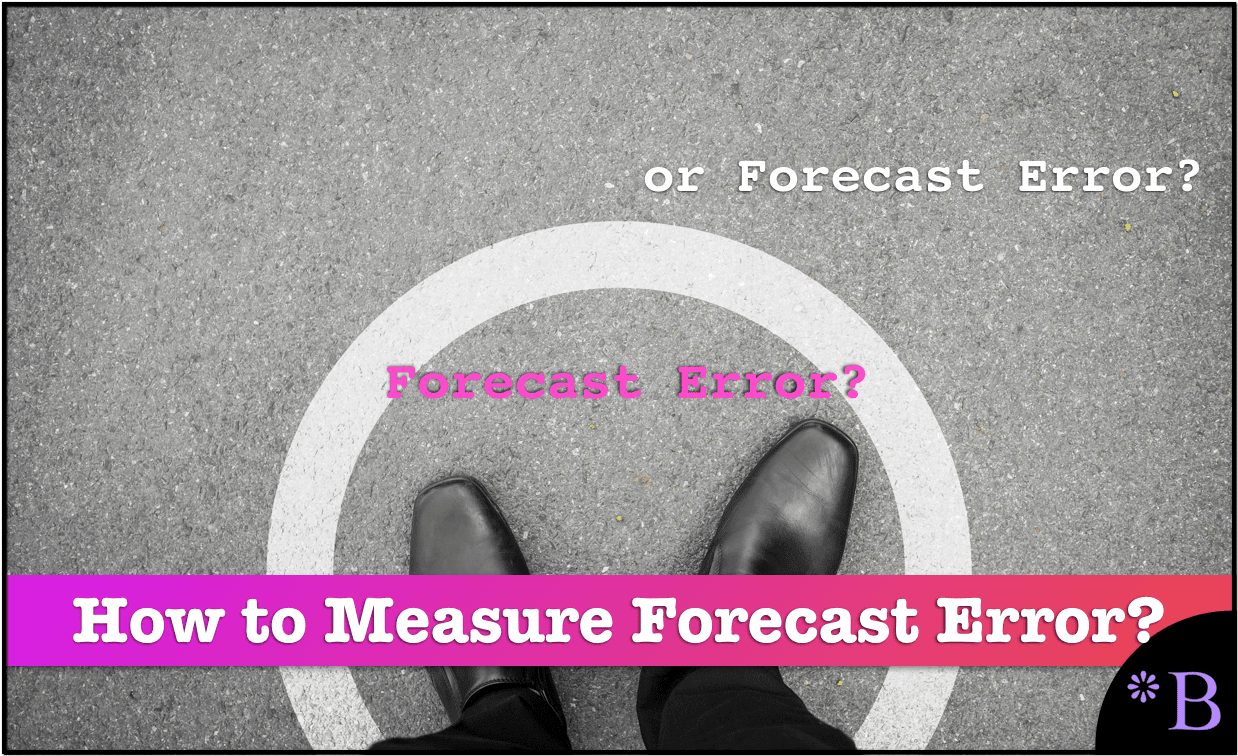How to Best Understand Measuring the Unconstrained Forecast
Executive Summary
- A constrained forecast is how most forecast error is measured.
- We cover the importance of the constrained forecast error.

Introduction
The topic of an unconstrained forecast is one of the most poorly explained concepts in supply chain planning. In this article, we seek to illuminate this topic and also bring up its relevance for forecast error measurement.
See our references for this article and related articles at this link.
What is an Unconstrained Forecast?
Very simply, an unconstrained forecast is what the company thinks it could sell if there were no capacity constraints. A constrained forecast is what the company says it can sell, given its constraints.
In the vast majority of companies, this topic is primarily focused or emphasized in S&OP. However, the topic is of great importance to forecast error measurement. Let us review the following example, which we break into Scenario 1, and then Scenario 1 Extension: Substitution.
Forecast Error Measurement Scenario 1
- The company thinks that it could sell 200 units of product ABC in August.
- When August arrives, customers place orders for 220 units of product ABC in August.
- However, because the company is capacity constrained, it is only able to provide 160 units.
- Therefore, the sales order quantity of product ABC is for 160 units.
- This sales order of 160 units is then saved as demand history.
- When the statistical forecast is generated, it uses the 160 units to form the basis of the forecast.
What are the problems with this scenario?
- The forecast error MAPE is measured as 40% too high.
- The forecast error MAPE is 20% too low.
- The sales history is “perverted” because the demand for product ABC for August was not 160 units, it was 220 units.
This means that the company is recording an inaccurate demand signal from the market.
Forecast Error Measurement Scenario 1 Extension: Substitution
Another scenario is an extension of this scenario.
- The customer (or series of customers, in either case, it makes no difference) substitutes the 60 units it is short for product ABC in August for product XYZ in August.
- The forecasting process is held accountable not for how well it is forecasting, but for how well it is forecasting within the constraints of the company. But the forecasting process should not be held accountable for the company’s constraints. What the company can fulfill is a question for supply planning.
What are the problems with this added scenario?
- Product ABC keeps its inaccurate demand record of 160 units.
- Product XYZ has 60 units added to its demand history.
- When the statistical forecast is run (without adjustment), the forecast for the future will overestimate the demand for XYZ and underestimate the demand for ABC.
The Importance of Measuring the Unconstrained Forecast
Companies should account for the forecast error versus the unconstrained forecast. However, the problem is that companies only very rarely know what their lost sales are. This is because companies go off of sales orders as the demand history. But this adds inaccuracy to the demand signal because it misses customer demand that was not satisfied, and that was fulfilled by the sales order being generated.
Conclusion
Brightwork Explorer has forecast error calculation capabilities that allow companies to estimate their unconstrained forecast far more easily, and therefore their unconstrained forecast error.